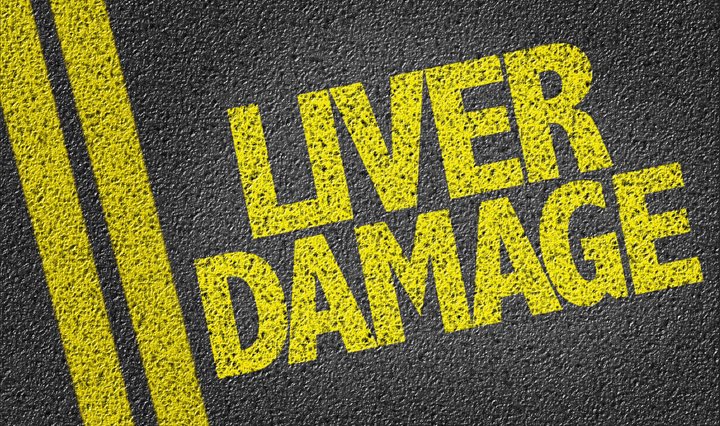Liver damage in the form of liver disease is one of the few diseases that has an incidence rate that continues to climb annually. The femur is the longest bone in the human body, the aorta is the largest artery, and the largest and heaviest internal organ is the liver. The primary function of the liver is detoxification. Liver cells contain chemicals called enzymes that process and metabolize what we accumulate through the day.
This vital organ is also responsible for the breakdown of and bilirubin (a yellow pigment present in our blood and stool). While a properly functioning liver is critical for a healthy body, it’s not a huge surprise that liver damage is very common (especially due to heavy consumption of alcohol). Hence, it’s important to recognize liver damage signs and symptoms early to treat and prevent it from taking a turn for the worse.
Stages of Liver Damage
A healthy liver can turn into a fatty liver when there are deposits of fat that lead to enlargement. From a fatty liver, scar tissue can develop a condition called liver fibrosis. The next stage is the possibly fatal liver cirrhosis, in which the scar tissue that is unable to regenerate and function effectively replaces the healthy tissue. Eventually, the liver loses function entirely and cannot be reversed.
Causes of Liver Damage
According to WebMD, liver damage due to fatty liver or cirrhosis can be linked and attributed to various factors, such as diabetes, obesity, viral infections (hepatitis), blockage and inflammation of the bile duct, or genetically inherited diseases (such as cystic fibrosis). Genetics also predispose us to alcoholism, so it’s important to monitor your alcohol intake if alcoholism runs in your family. The earlier you recognize liver damage symptoms, the better.
Fatty Liver
There are two types fatty liver disease (hepatic steatosis): Alcoholic Liver Disease (ALD) and Non-Alcoholic Liver Disease (NALD). As you might have guessed, excessive alcohol consumption is the cause of ALD. Genes typically predispose you to both ALD and NALD. However, NALD has various extraneous factors at play which includes rapid weight loss and even malnutrition. Fatty liver is a “two-hit” process in which the first hit is steatosis, which makes the liver more vulnerable, and the second hit is the actual trigger, such as oxidative stress.
Liver Damage from Drinking
Alcoholic liver disease is due to a fatty liver with a build-up within the liver cells. In early stages, cutting down on alcohol may lessen the severity of a fatty liver disease. If your condition is mild, you may not exhibit any liver damage symptoms, but you may have a higher level of liver enzymes in your blood. In a case such as this, you would require a blood test for a diagnosis as soon as possible as this condition can be fatal.
Liver Damage Signs and Symptoms
Swelling of the abdominal area, hands, legs, and ankles is a sign of a liver condition called ascites which causes a fluid buildup in tissues. Such liver damage creates a protein imbalance resulting in a noticeable potbelly. Sometimes these swellings may also be a sign of cirrhosis. Bruising and bleeding are symptoms of liver damage as well because they may indicate blood clotting. Weakness is one of the signs we typically neglect. Exhaustion could be a sign of low oxygen blood levels or accumulation of poison in your system. Loss of appetite is also an early stage symptom. Further, nausea, weight loss, and digestive discomfort can be initial signs of hepatitis.
Bilirubin, a yellowish pigment, causes Jaundice, which is often more common in newborns. It accumulates in the body system because the malfunctioning liver cannot keep up with breaking it down. High levels of bilirubin make the eyes and skin appear yellow. You might also see a change of color in your urine and stool. Abdominal pain is a symptom for cirrhosis that feels like a sharp, stabbing pain on the right side your torso. If the pain is unbearable, seek immediate medical attention.
Change in personality is another sign because of those toxins that accumulate in the blood eventually reach the brain. Confusion, problems with concentration, forgetfulness, unresponsiveness, and insomnia are some personality changes that indicate a liver malfunction. Vomiting is a symptom that occurs in the late stages of liver damage. Digestive discomfort and nausea evolve into persistent vomiting because of toxins and free radicals that freely circulate through the body reach alarming levels.
Taking Precaution
With advancements in technology and medical research today, we tend to forget the importance of leading a healthy lifestyle. If you can relate to any of the symptoms mentioned above, you should immediately consult with your doctor. Detecting liver damage in early stages can make everything so much easier. With the help of modern medical technology, your doctor will easily diagnose your illness and put you on a suitable treatment plan.
Source from: healthliving.today
Featured Image Source: DepositPhotos / © gustavofrazao
Posted on May 5, 2023



